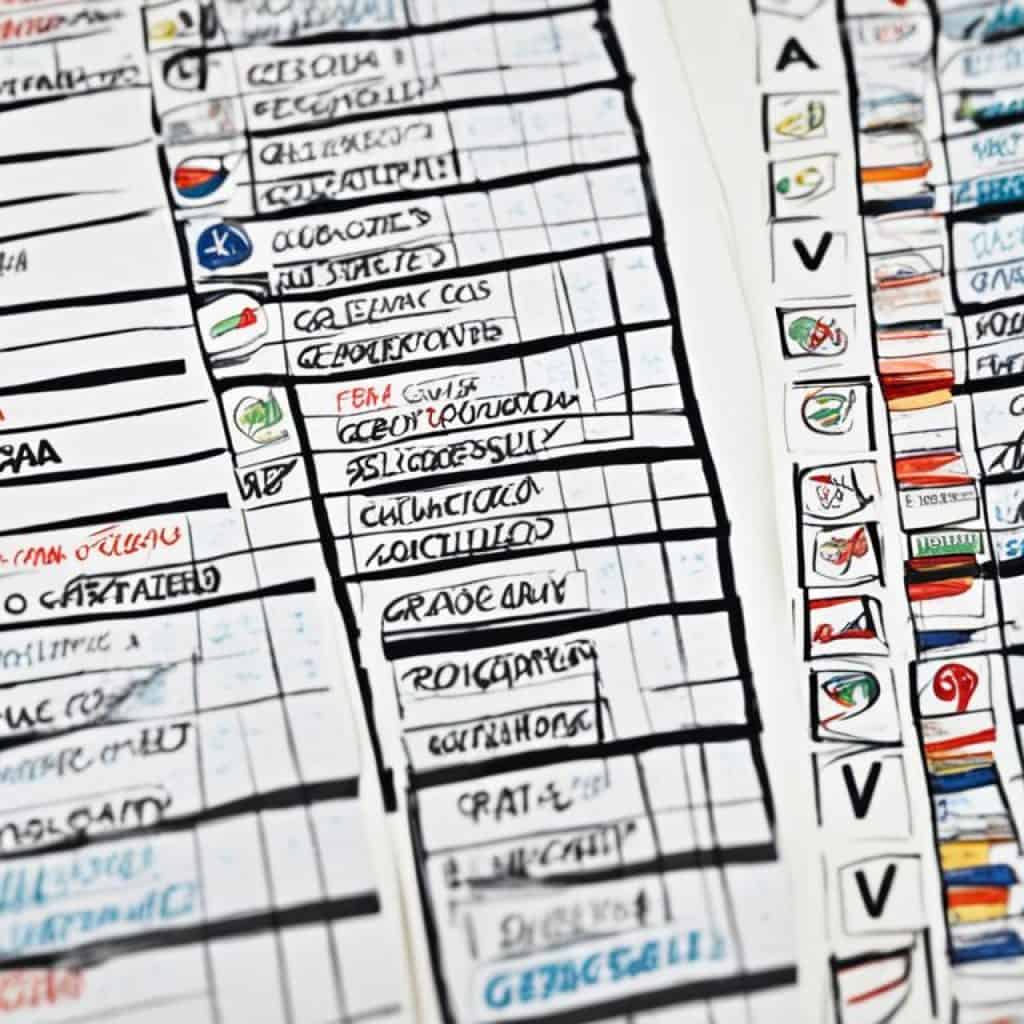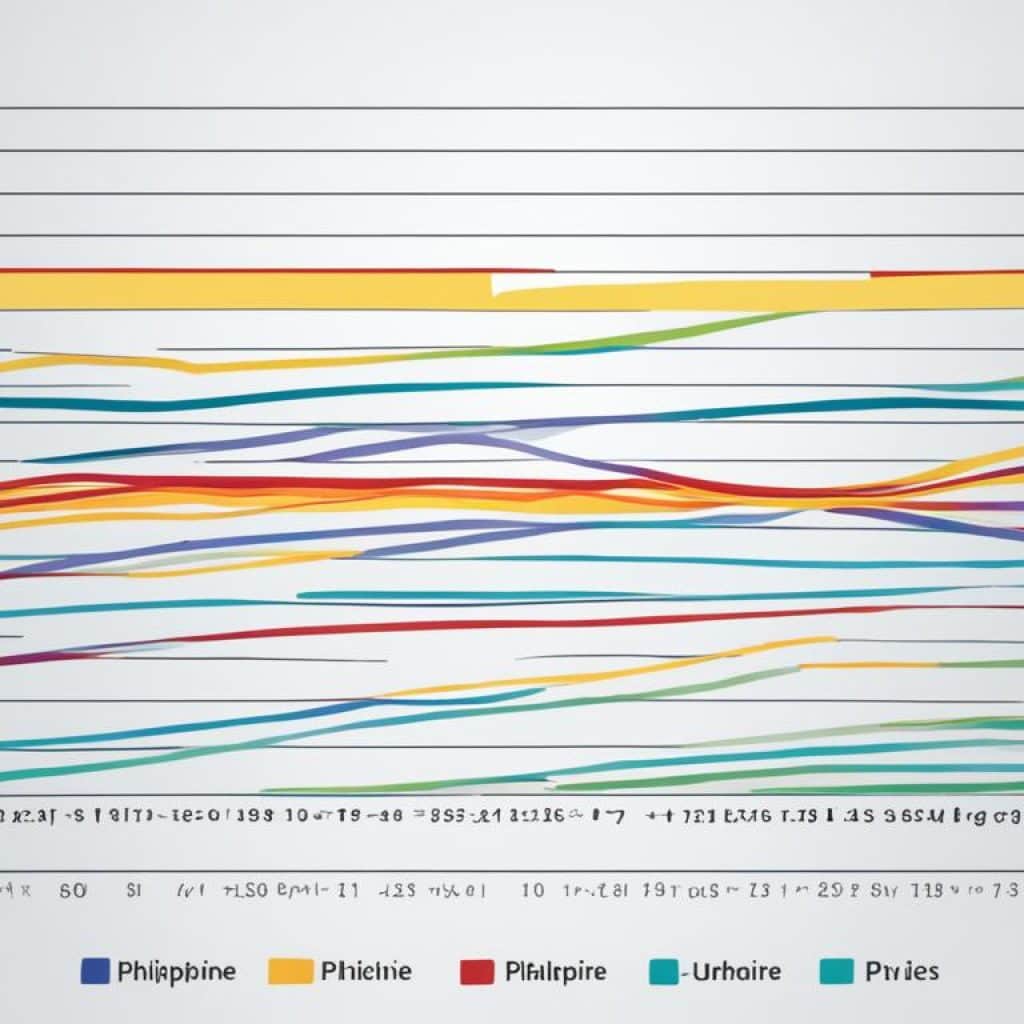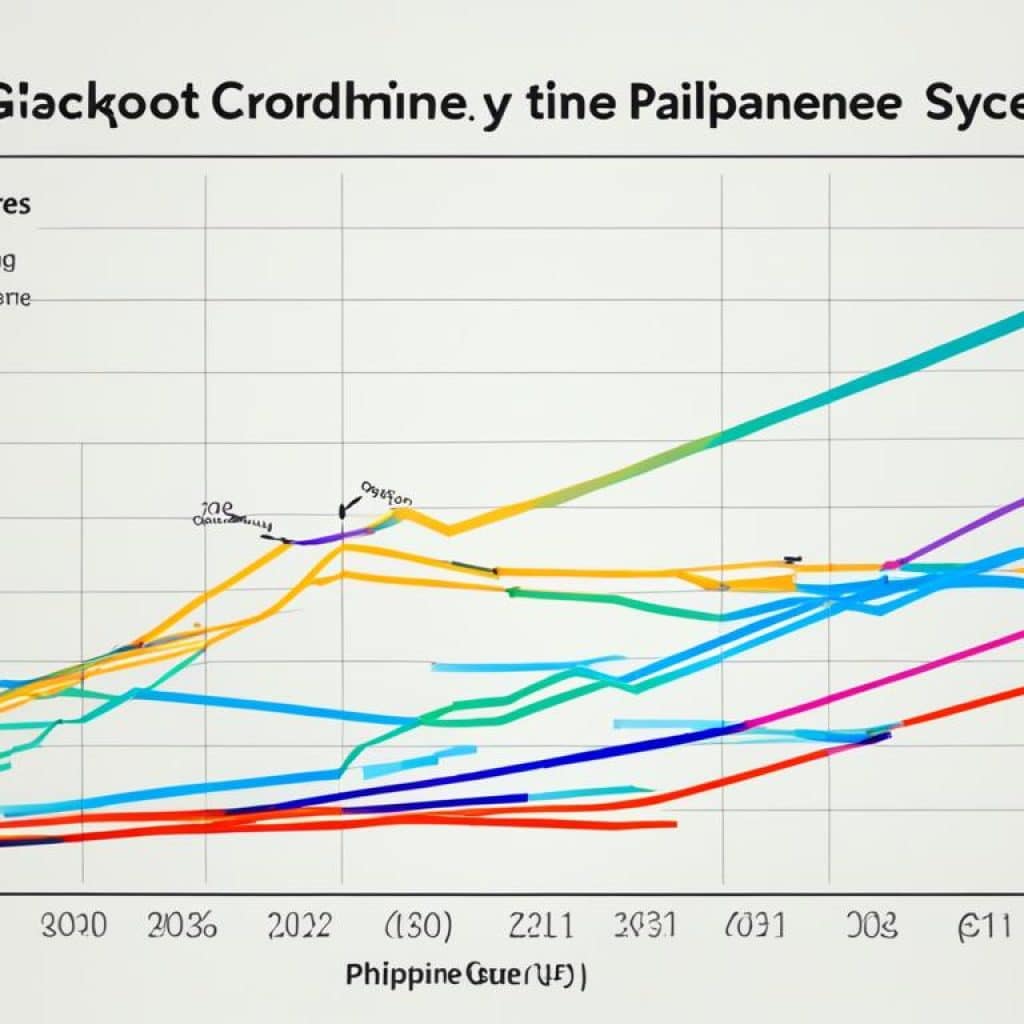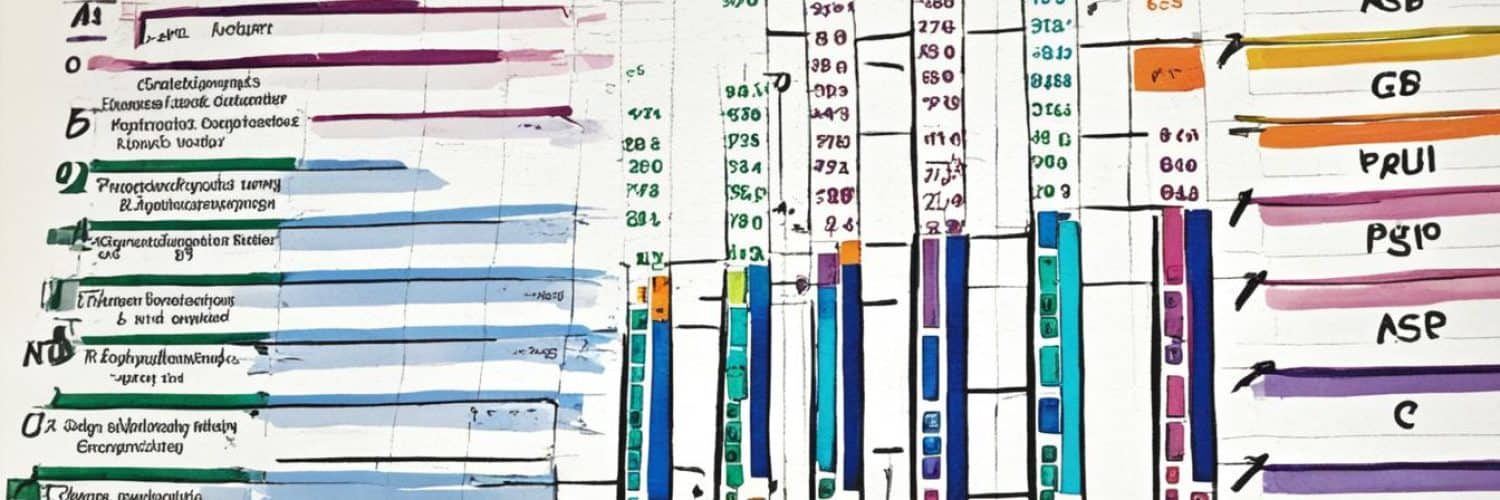Have you ever wondered how students’ academic performance is assessed in the Philippines? Is it similar to the grading systems in other countries, or does it have its own unique approach?
Whether you’re a student, parent, or educator, understanding the Philippine grading system is crucial for navigating the education landscape. This article will delve into the intricacies of the grading system in the Philippines, exploring the different scales used, the variations between institutions, and the impact it has on students’ academic journeys.
Key Takeaways:
- The Philippine grading system varies between universities and schools, with some using a 4-point scale and others using a 5-point scale.
- There are two commonly used grading systems in the Philippines: a 4-point scale and a 5-point scale.
- Grading systems in the Philippines differ from those in other countries, such as the United States and Canada, in terms of scale and grade equivalence ranges.
- The grading system in Philippine schools follows a 5-point scale, while colleges and universities use a similar scale with specific grade equivalence ranges.
- Specialized institutions in the Philippines may have their own unique grading systems, with subject-specific grading or different grade equivalence ranges.
Types of Grading Systems in the Philippines
In the Philippines, different educational institutions use various grading systems to evaluate students’ academic performance. The two commonly used grading systems are the 4-point scale and the 5-point scale.
4-Point Scale
The first grading system, which is similar to the system used in the United States, is based on a 4-point scale. This scale includes the following grades: A, B, C, D, and F. Each grade corresponds to a specific numerical value, with A being the highest grade and F representing a failing mark. The numerical values range from 4.00 for an A to 0.00 for an F.
5-Point Scale
Some private schools in the Philippines use a 5-point scale. This scale includes grades such as 1.00, 1.25, 1.50, 1.75, and 2.00. Similar to the 4-point scale, each grade has a corresponding numerical value. In this system, 1.00 is the highest grade, indicating excellent performance, while 2.00 represents a passing mark.
It’s important to note that each educational institution in the Philippines may have its own specific grade equivalence range within these grading systems. Therefore, it’s essential for students to understand the grading system used by their respective schools or universities.
Understanding the different types of grading systems in the Philippines is key to accurately interpreting students’ academic performance and assessing their progress.
Difference Between the Philippine Grading System and Other Countries
The grading system in the Philippines differs from that of other countries, such as the United States and Canada. While the Philippines primarily uses a 5-point grading scale, these countries commonly use a 4-point grading scale. Additionally, the grade equivalence ranges may vary between countries. For example, in the Philippines, a grade of 2.49 or above is considered a satisfactory passing grade, while in the United States, a grade of 2.5 or above is considered a passing grade.
Comparison of Grading Systems
| Country | Grading System | Passing Grade |
|---|---|---|
| Philippines | 5-point scale | 2.49 or above |
| United States | 4-point scale | 2.5 or above |
| Canada | 4-point scale | 2.5 or above |
The table above provides a comparison of the grading systems in the Philippines, the United States, and Canada. It highlights the differences in the grading scales and the passing grade requirements. It’s important for students and educators to be aware of these variations to ensure accurate interpretation and evaluation of academic performance.

“The grading system in the Philippines provides a unique perspective on academic evaluation. While some countries may use different grading scales, it’s essential to understand the specific requirements and thresholds of each system to perceive the true value of a student’s grades.” – Education Expert
Grading System in Philippine Schools
In Philippine schools, the grading system follows a 5-point scale that provides a standardized way of evaluating students’ academic progress from elementary to high school. This system plays a crucial role in assessing student performance and helping them track their achievements.
The lowest passing grade in Philippine schools is typically 2.50, equivalent to a C. Grades of 90 or above are considered excellent, showcasing outstanding performance. This grading system ensures that students receive fair and consistent evaluations across different subjects and grade levels.
The elementary and high school grading system in the Philippines places importance on providing students with a comprehensive understanding of their academic strengths and areas for improvement. It encourages students to strive for excellence and maintain a consistent level of achievement throughout their educational journey.
Grading System Overview in Philippine Schools:
| Grades | Description |
|---|---|
| 90 – 100 | Excellent |
| 85 – 89 | Very Good |
| 80 – 84 | Good |
| 75 – 79 | Fair |
| Below 75 | Fail |
This grading system allows students to understand their academic standing and encourages them to strive for improvement. It fosters a sense of motivation and enables students to set goals for continuous growth and advancement in their educational journey.
Overall, the grading system in Philippine schools serves as a valuable tool for evaluating students’ academic progress, providing them with feedback, and facilitating their development as lifelong learners.
Grading System in Philippine Colleges
In Philippine colleges, the grading system follows a 5-point scale. The specific letter grades assigned to each point value may vary between colleges. The lowest passing grade typically falls in the range of 75-77, but this can vary depending on the institution.
The grading system plays a crucial role in evaluating students’ academic performance at the college level. It provides a standardized method for assessing their progress and understanding of the course material. The grades obtained in each subject are used to calculate the student’s Grade Point Average (GPA), which is a representation of their overall scholastic standing.
To better understand the grading system, it is important to familiarize oneself with the specific grade equivalence ranges and letter grades used by the college. This knowledge allows students to accurately interpret their grades and assess their academic progress.
The GPA serves as an important measure of a student’s achievements and is often considered by scholarships and during admissions to higher education or professional programs. It provides an indication of an individual’s academic capabilities and can influence future opportunities.
Overall, the grading system in Philippine colleges is designed to motivate students to perform at their best, provide a fair assessment of their academic performance, and set a foundation for their future endeavors.
Grading System in Philippine Universities
Philippine universities follow a grading system based on a 5-point scale to assess students’ academic performance. Although the specific letter grades and grade equivalence ranges may vary between universities, the lowest passing grade typically falls within the range of 75-77. This grading system holds immense significance in evaluating students’ overall scholastic standing and determining their Grade Point Average (GPA).
Universities utilize GPA as a metric to measure students’ academic achievements and potential. It serves as a crucial factor for determining scholarship eligibility, honors recognition, and other academic distinctions. GPA also provides valuable insights into a student’s performance and their capacity to handle more challenging academic endeavors.
| Grade | Point Value |
|---|---|
| A+ | 4.00 |
| A | 3.75 – 3.99 |
| A- | 3.50 – 3.74 |
| B+ | 3.00 – 3.49 |
| B | 2.75 – 2.99 |
| B- | 2.50 – 2.74 |
| C+ | 2.00 – 2.49 |
| C | 1.75 – 1.99 |
| C- | 1.50 – 1.74 |
| D+ | 1.00 – 1.49 |
| D | 0.75 – 0.99 |
| F | 0.00 – 0.74 |

Philippine Specialized Institution Grading Systems
Some specialized institutions in the Philippines, such as De La Salle University and FEU-East Asia College, have their own unique grading systems tailored to their specific educational programs. These institutions recognize the importance of providing a grading system that aligns with their specialized curriculum and academic requirements.
De La Salle University, for example, implements a grading system that focuses on subject-specific assessments. Each course is evaluated based on the specific learning outcomes and criteria established by the faculty. This subject-focused approach ensures that students’ achievements in specialized areas are accurately evaluated and recognized.
On the other hand, FEU-East Asia College incorporates a grading system that follows a different grade equivalence range compared to traditional institutions. This system allows for a more tailored assessment of students’ performance within their specialized fields of study.
Students attending these specialized institutions must acquaint themselves with the specific grading system and requirements in order to navigate their academic journey effectively. Understanding the unique grading system will enable students to track their progress accurately and make informed decisions regarding their studies.
âThe grading systems at De La Salle University and FEU-East Asia College empower students with the recognition and evaluation they deserve within their chosen fields of expertise.â
How to Calculate GPA in the Philippines
Calculating your Grade Point Average (GPA) in the Philippines is a straightforward process that provides a comprehensive assessment of your overall academic performance. By using a GPA calculator, you can easily determine your GPA by taking into account the grades earned in different subjects.
The GPA calculator takes the grades you’ve received in each subject and calculates the average, giving you a numerical representation of your scholastic standing. This enables you to track your progress accurately and understand your academic achievements.
Furthermore, some universities in the Philippines utilize a General Weighted Average (GWA) to evaluate your academic performance. The GWA incorporates all the subjects you’ve taken at a specific level, including those outside the curriculum, providing a more holistic perspective of your academic abilities.
Using the GPA Calculator
Follow these simple steps to calculate your GPA using the GPA calculator:
- Open the GPA calculator on your preferred platform.
- Enter the grade you’ve received for each subject you’ve completed.
- Assign the corresponding credit value to each subject, indicating its weight in your academic journey.
- Click the calculate button.
- View your GPA, which will be presented as a numerical value.
It’s important to note that different universities and colleges might have their own specific GPA scales and grading systems. Therefore, it’s crucial to understand your institution’s grading guidelines to accurately interpret your GPA.
Here’s an example of how the GPA calculator output might look:
| Subject | Grade | Credits |
|---|---|---|
| Mathematics | 3.50 | 3 |
| English | 4.00 | 3 |
| Science | 3.25 | 4 |
| History | 3.75 | 2 |
Your GPA calculation:
| Total Credits | Total Grade Points | GPA |
|---|---|---|
| 12 | 45 | 3.75 |
With the help of a GPA calculator, you can efficiently track your academic progress, identify areas for improvement, and celebrate your achievements. It serves as a valuable tool for students in the Philippines to navigate their educational journey.
Comparison of Grading Systems between Different Philippine Institutions
While the grading system in the Philippines provides a standardized measure of academic performance, it’s essential to understand that each institution may have its own unique grading system and grade equivalence ranges. This section compares the grading systems of two prominent Philippine institutions: the University of the Philippines and De La Salle University.
Grading System at the University of the Philippines
The University of the Philippines, one of the country’s premier institutions, follows a specific grading point system. The university assigns corresponding grade equivalents to numerical grades to evaluate students’ academic performance.
Example Grade Equivalents at the University of the Philippines:
Numerical Grade Grade Equivalent 1.00 Excellent 1.25 Very Good 1.50 Very Good 1.75 Good 2.00 Good 2.25 Fair 2.50 Fair … (more grade equivalents) …
Students enrolled in the University of the Philippines should familiarize themselves with this grading system to accurately interpret their grades and understand their academic standing.
Grading System at De La Salle University
De La Salle University, another respected institution in the Philippines, follows its own unique grading system with specific grade equivalences.
Example Grade Equivalents at De La Salle University:
Numerical Grade Grade Equivalent 4.00 Excellent 3.50 Very Good 3.00 Good 2.50 Fair 2.00 Passed 1.00 Failed … (more grade equivalents) …
De La Salle University students should be familiar with their institution’s grading system to accurately interpret their grades and assess their academic performance.
Understanding the grading systems of different Philippine institutions is crucial for students to navigate their academic journey successfully. It empowers them to accurately interpret their grades, evaluate their academic progress, and make informed decisions regarding their education.
The Importance of the Grading System in the Philippines
The grading system in the Philippines plays a vital role in measuring students’ academic performance and evaluating their progress. It serves as a standardized method of assessing achievement and growth across various subjects and educational levels.
With the help of the grading system, students, parents, and educators can effectively gauge the level of mastery and understanding students have attained in their educational journey. It provides valuable insights into students’ overall scholastic abilities and helps identify areas that require improvement.
Moreover, the grading system in the Philippines carries significant weight in determining scholarships, honors, and admissions to higher education institutions. It acts as a gatekeeper that opens doors to future opportunities for students who have consistently demonstrated exemplary academic performance.
“The grading system is not just a numerical representation of a student’s performance; it carries real-world implications that extend beyond the classroom.”
The grading system serves as a form of academic currency, reflecting the hard work and dedication students put into their studies. Its importance goes beyond mere numerical grades, as it provides a comprehensive evaluation of students’ scholastic accomplishments and personal growth.
Through the grading system, students can showcase their academic capabilities and demonstrate their readiness for further educational pursuits. It serves as a benchmark for students to measure their progress and motivates them to strive for excellence.
Effective Academic Performance Measurement and Scholastic Evaluation
The grading system in the Philippines enables effective academic performance measurement and scholastic evaluation. It allows students to track their achievements and progress, providing a clear picture of their academic standing.
By evaluating the grades received in different subjects, students can identify areas of strength and weakness. This knowledge empowers them to focus their efforts on improving in subjects where they may be struggling, enabling a targeted approach to their studies.
Furthermore, the grading system facilitates a fair and objective evaluation of students’ scholastic abilities. It promotes equality by providing a standardized framework for assessing academic performance, ensuring that all students are evaluated on the same scale.
Overall, the grading system in the Philippines serves as a valuable tool for both students and educators. It promotes a culture of continuous learning, sets high academic standards, and instills a sense of achievement and motivation in students as they strive for success in their educational pursuits.
The Role of GPA in the Philippine Education System
The grade point average (GPA) is a crucial measure of a student’s overall scholastic standing in the Philippines. GPA serves as a numerical representation of academic performance, enabling institutions to evaluate a student’s achievements and assess their aptitude for higher education.
GPA plays a significant role in determining eligibility for scholarships and grants, offering students opportunities for financial assistance to pursue their educational goals. Additionally, it is often considered during admissions processes, providing admissions committees with a standardized measure to evaluate applicants and make informed decisions.
Job applications also commonly require applicants to provide their GPA as part of their educational background. Employers use GPA as an initial indicator of academic competence and achievement, helping them assess a candidate’s potential fit for the position.
How is GPA Calculated?
GPA is calculated by assigning a numerical value to each letter grade earned by a student. The numerical values are then weighted according to the credit hours assigned to each course. The individual weighted GPA for each course is then averaged to calculate the overall GPA.
The following table illustrates a sample GPA calculation:
| Course | Credit Hours | Letter Grade | Numerical Grade | Weighted GPA |
|---|---|---|---|---|
| English | 3 | A | 4.0 | 12.0 |
| Mathematics | 4 | B+ | 3.5 | 14.0 |
| Science | 3 | A- | 3.7 | 11.1 |
| Social Studies | 2 | C+ | 2.5 | 5.0 |
In this example, the total weighted GPA is calculated by summing the weighted GPAs for each course (12.0 + 14.0 + 11.1 + 5.0 = 42.1). The overall GPA is then obtained by dividing the total weighted GPA by the total credit hours (42.1 ÷ 12 = 3.51).
The GPA scale typically ranges from 1.00 to 4.00, with 4.00 representing the highest possible GPA. However, it is important to note that GPA scales may vary between institutions, so students should refer to their respective institution’s grading system for accurate GPA calculations.
The Role of GPA in the Philippine Education System goes beyond a simple number. It serves as an indicator of academic excellence, highlighting a student’s achievements and potential for success in higher education and future career endeavors.
The Grading System's Impact on Student Progress and Motivation
The grading system in the Philippines has a profound influence on students’ progress and motivation. It plays a pivotal role in providing students with a clear understanding of their academic achievements and helps them set realistic goals for improvement.
When students receive their grades, they gain insight into their strengths and areas for improvement. This feedback allows them to reflect on their performance and identify ways to enhance their learning. The grading system serves as a motivational tool, driving students to strive for higher grades and maintain a good academic standing.
One of the key benefits of the grading system is that it allows students to track their progress over time. By comparing their grades from different periods, students can assess their growth and see the results of their efforts. This tracking mechanism provides a sense of accomplishment and motivates students to continue putting in their best effort.
In addition, the grading system provides valuable feedback for students’ academic development. Teachers’ comments and suggestions on assignments and exams give students insights into how they can improve their work. This constructive feedback fosters a growth mindset and encourages students to embrace challenges and strive for continuous improvement.
“The grading system provides students with a sense of accomplishment and motivation to excel in their studies.”
The grading system also plays a vital role in assessing students’ overall academic progress. By evaluating students’ grades across multiple subjects, educators can gain a holistic view of their performance. This comprehensive assessment enables teachers and parents to identify any areas where students may be struggling and provide targeted support to facilitate improvement.
Furthermore, the grading system allows students to set performance goals and work towards achieving them. Knowing that their academic progress is being measured and tracked, students are encouraged to take ownership of their learning and strive for excellence. This self-motivation fosters a sense of responsibility and empowers students to take the necessary steps to succeed.
Overall, the grading system in the Philippines has a significant impact on student progress and motivation. It provides students with a clear understanding of their academic achievements, helps them set realistic goals, serves as a motivational tool, allows progress tracking, provides valuable feedback, and promotes a sense of personal responsibility. By recognizing and celebrating student achievements, the grading system helps cultivate a positive learning environment and encourages students to reach their full potential.
| Key Points | Impact |
|---|---|
| Clear Understanding of Academic Achievements | Helps students identify strengths and areas for improvement |
| Motivational Tool | Encourages students to strive for higher grades and maintain good academic standing |
| Progress Tracking | Allows students to assess their growth and track their progress over time |
| Valuable Feedback | Provides constructive feedback for academic development |
| Assessment of Overall Academic Progress | Enables educators to gain a holistic view of students’ performance |
| Goal Setting and Self-Motivation | Encourages students to take ownership of their learning and strive for excellence |
Challenges and Limitations of the Grading System in the Philippines
While the grading system in the Philippines is widely used and provides a standardized measure of academic performance, it is not without its challenges and limitations. These factors can impact the accuracy and comprehensiveness of the grading system, affecting students’ educational journey and their ability to showcase their full potential.
Subjectivity in Grading
One of the limitations of the grading system in the Philippines is the subjectivity that can be inherent in the grading process. Grading may vary between teachers and institutions, leading to inconsistencies in evaluating students’ performance. This subjectivity can stem from differences in teaching styles, personal biases, or interpretation of grading criteria. As a result, students may receive varied grades for the same level of accomplishment, impacting their academic standing and motivation.
“The subjectivity in the grading process can create disparities among students, affecting their academic journey and confidence in their abilities.”
Focus on Numerical Grades
Another limitation of the grading system is its heavy reliance on numerical grades. While grades provide a quantifiable measure of academic performance, they may not fully capture the range of a student’s abilities and achievements. The grading system primarily emphasizes knowledge retention and test performance, overlooking other important aspects such as critical thinking, problem-solving abilities, and practical application of acquired knowledge.
“The grading system’s narrow focus on numerical grades may fail to recognize the diverse and multifaceted talents and skills of students.”
Potential Impact on Student Motivation
The challenges and limitations of the grading system can also have an impact on student motivation. When students perceive grading as subjective or overly focused on numerical scores, it can diminish their enthusiasm for learning. Students may become more focused on achieving high grades rather than engaging in meaningful learning experiences. This emphasis on grades can hinder the development of intrinsic motivation and a genuine passion for learning.
Limitations and Challenges of the Grading System in the Philippines
| Limitations | Implications |
|---|---|
| Subjectivity in grading | Inconsistencies in evaluation and disparities among students |
| Focus on numerical grades | Overlooks holistic assessment of skills and knowledge |
| Potential impact on student motivation | Emphasis on grades over meaningful learning experiences |
In light of these challenges and limitations, it is crucial for educators, institutions, and policymakers to continually evaluate and refine the grading system. By introducing more objective evaluation methods, incorporating holistic assessments, and promoting a growth mindset, the grading system can better support students’ overall development, encourage a love for learning, and provide a comprehensive representation of their abilities and achievements.
Evolving Trends in the Philippine Grading System
The grading system in the Philippines is constantly evolving to cater to the changing needs and demands of the education sector. As educators and institutions strive to provide a holistic and accurate assessment of students’ abilities and achievements, innovative assessment methods have gained traction in recent years.
A key trend in the Philippine grading system is the adoption of project-based assessments. This approach moves away from traditional exams and quizzes and focuses on students’ practical application of knowledge and skills through real-world projects. Project-based assessments encourage critical thinking, problem-solving, and creativity, allowing students to demonstrate their mastery in a more practical and engaging manner.
Another innovative assessment method gaining popularity is the use of portfolios. Portfolios are a collection of students’ work samples, often including projects, essays, presentations, and other artifacts that showcase their learning progress over time. By analyzing a student’s portfolio, educators can gain a comprehensive view of their abilities and growth in various subject areas.
“Project-based assessments and portfolios allow students to showcase their abilities beyond numerical grades, providing a more accurate representation of their skills and achievements.” – Dr. Maria Santos, Education Specialist
Competency-based evaluations are also being integrated into the grading system. This approach focuses on assessing students’ mastery of specific skills or competencies rather than their overall performance in a subject. Competency-based evaluations provide targeted feedback and guidance to help students develop specific skills required for their future careers.
Benefits of Innovative Assessment Methods
These innovative assessment methods bring several benefits to the Philippine grading system:
- They promote a deeper understanding of the subject matter by encouraging active and practical learning.
- They foster critical thinking, problem-solving, and creativity, which are essential skills for success in the modern world.
- They allow students to showcase their unique strengths and talents beyond their academic performance.
- They provide a more comprehensive view of students’ abilities and growth over time.
- They align with the evolving needs of the workforce, preparing students for future challenges.
By embracing these evolving trends and innovative assessment methods, the Philippine grading system is moving towards a more student-centered and holistic approach to education.

The Future of the Grading System in the Philippines
The grading system in the Philippines is constantly evolving to meet the needs of students, educators, and the changing landscape of education. As we look to the future, there are several enhancements and refinements that we can expect to see in the grading system to ensure its effectiveness and relevance in the coming years.
New Assessment Methods
One of the key enhancements in the future of the grading system will be the adoption of new assessment methods. Educators are exploring innovative approaches such as project-based assessments, portfolios, and competency-based evaluations. These methods aim to provide a more comprehensive and accurate representation of students’ abilities and achievements, going beyond traditional numerical grades. By incorporating these new assessment methods, educators can gain a deeper understanding of students’ skills, knowledge, and critical thinking abilities.
Integration of Technology
The use of technology will play a vital role in enhancing the grading system in the Philippines. With advancements in digital tools and educational software, grading processes can become more efficient and streamlined. Automated grading systems and online platforms can help educators manage and evaluate student assignments and assessments more effectively. Technology can also provide opportunities for personalized feedback and learning, allowing students to track their progress and areas for improvement in real-time.
Holistic Evaluations
In the future, there will be a greater emphasis on holistic evaluations that go beyond numerical grades. Holistic evaluations consider a broader range of factors, such as participation, critical thinking, creativity, and problem-solving skills. By incorporating these elements into the grading system, students’ overall capabilities and readiness for future challenges can be better assessed. Holistic evaluations encourage a more well-rounded education that prepares students for the demands of the 21st century.
In conclusion, the future of the grading system in the Philippines is promising. With the integration of new assessment methods, the use of technology, and a focus on holistic evaluations, the grading system will become more comprehensive, accurate, and reflective of students’ abilities. These enhancements will enable educators to better support student learning and development, ensuring that the grading system aligns with the goals of the educational system. As we embrace these advancements, we can create a grading system that prepares students for future success and empowers them to thrive in a rapidly changing world.
Conclusion
The grading system in the Philippines holds great importance in evaluating students’ academic performance and determining their scholastic standing. It serves as a tool for tracking progress and fostering continuous development. With different grading scales used across educational institutions, it is crucial for students to understand their specific grading system to accurately interpret their grades and gauge their achievements.
As the education landscape evolves, there is a growing emphasis on implementing innovative assessment methods that provide a comprehensive and holistic evaluation of students’ abilities and achievements. These advancements aim to go beyond traditional numerical grades, incorporating project-based assessments, portfolios, and competency-based evaluations to provide a better understanding of students’ capabilities.
The future of the grading system in the Philippines is promising. It is expected to witness further enhancements and refinements that cater to the evolving needs of students and educators. This includes leveraging technology for more efficient grading processes, embracing holistic evaluations that encompass a wide range of skills and competencies, and fostering lifelong learning to prepare students for future challenges.
In conclusion, the grading system in the Philippines is an essential aspect of the educational journey. It not only assesses academic performance but also encourages personal growth and development. By understanding the grading system and embracing future enhancements, students can strive for excellence and navigate their academic endeavors with clarity and confidence.
FAQ
What is the grading system in the Philippines?
The grading system in the Philippines is used to assess students’ academic performance. It varies between universities and schools, with some using a 4-point scale and others using a 5-point scale.
What are the types of grading systems in the Philippines?
The types of grading systems in the Philippines include college grading systems, university grading systems, high school grading systems, and school grading systems.
How does the Philippine grading system differ from other countries?
The Philippine grading system primarily uses a 5-point scale, while countries like the United States and Canada commonly use a 4-point scale. The grade equivalence ranges may also vary between countries.
What is the grading system in Philippine schools?
The grading system in Philippine schools follows a 5-point scale, with the lowest passing grade typically being 2.50. Grades of 90 or above are considered excellent.
What is the grading system in Philippine colleges?
Philippine colleges use a grading system based on a 5-point scale. The specific letter grades corresponding to each point value may vary between colleges, and the lowest passing grade is usually around 75-77.
What is the grading system in Philippine universities?
Philippine universities also use a grading system based on a 5-point scale. The specific letter grades and grade equivalence ranges may differ between universities, and the lowest passing grade is typically around 75-77.
Do specialized institutions in the Philippines have their own grading systems?
Yes, some specialized institutions in the Philippines, such as De La Salle University and FEU-East Asia College, may have their own unique grading systems.
How can students calculate their GPA in the Philippines?
Students in the Philippines can use GPA calculators to calculate their grade point average. Some universities may also use a general weighted average (GWA) to evaluate academic performance.
How do grade equivalence ranges differ among Philippine institutions?
Each Philippine institution may have its own specific grade equivalence ranges. For example, the University of the Philippines and De La Salle University have their own grading systems with specific grade equivalences.
What is the importance of the grading system in the Philippines?
The grading system in the Philippines plays a crucial role in evaluating students’ academic performance, tracking their progress, and determining their scholastic standing.
What is the role of GPA in the Philippine education system?
GPA in the Philippines is used to evaluate academic performance, determine eligibility for scholarships, and assess a student’s overall academic aptitude for higher education.
How does the grading system in the Philippines impact student progress and motivation?
The grading system in the Philippines provides students with a clear understanding of their academic achievements, helps them set goals for improvement, and serves as a motivational tool.
What are the challenges and limitations of the grading system in the Philippines?
The grading system in the Philippines can be subjective to some extent, and it may not capture the full range of a student’s abilities and achievements.
What are the evolving trends in the Philippine grading system?
The Philippine grading system is evolving to incorporate innovative assessment methods, such as project-based assessments, portfolios, and competency-based evaluations, to provide a more comprehensive representation of students’ abilities.
What does the future hold for the grading system in the Philippines?
The future of the grading system in the Philippines will likely see further enhancements and refinements to better meet the needs of students, educators, and the changing landscape of education.














Add comment